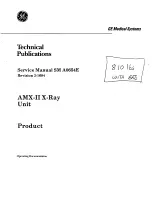
microSD Card Specifications
• We include the ideal type of card to use with the STS. If you need to buy an additional card, we highly
recommend that you purchase the same class of card. The STS works best with a UHS Speed Class 3
card (also known as U3, which is the fastest of the UHS-I type cards).
•
Look for this symbol printed on the card:
• Example card:
SanDisk Extreme microSDHC UHS-1 Card
(advertised as “Read up to 60MB/sec, Write up
to 40MB/sec”)
• If “UHS Speed Class 3” is not available, a “Class 10” card is acceptable (booting will be slower, and there
may be more latency when playing 96kHz/32-bit/stereo files at high Pitch settings)
• A Class 10 card will be slower than a UHS Class 3 card. A class 6 or class 4 will
be even slower than the class 10. If you are not using the STS to record while
simultaneously playing, and you only playback 44.1kHz/16bit samples, then
even the slowest microSD Card available will work fine. However, we still recommend purchasing a high-
quality microSD Card, as cheaper cards are not as reliable and may result in loss of your data.
• See https://www.sdcard.org/developers/overview/speed_class/ for a discussion on micro SD Card speeds
and labeling
•
Never remove the microSD card while the Busy light is on.
It’s OK to remove it if the Busy light is off.
Once a sample is played, it can be played again without accessing the SD Card (unless you change
samples/banks or the sample window is longer than 30 seconds). You can hot-swap cards this way, but
you must do a “Revert All Banks” button action if you insert a completely new card.
How to prepare a new microSD Card
• Purchase a UHS Class 3 card (see above)
• Format the card as ExFAT (preferred) or FAT32
(acceptable). See screenshot (right) for how to set
MacOS standard “Disk Utility” program.
• Verify all sample files are valid WAV files (see file
format specifications below)
• Put your WAV files into folders to organize them into
banks (preferably 10 WAV files per folder)
•
Each new folder found will represent a bank. You
can name the folders beginning with the name of
a color (such as “Yellow-field recordings”) to
force that folder to load into a particular color
bank.
•
Sample files must be located directly in the root directory, or in a folder. Folders inside folders (sub-
folders) are never scanned by the STS.
File Formats
The STS recognizes the vast majority of WAV files. Verify your files meet the follow criteria (all others
will be ignored):
•
Format
: WAVE
•
Bit depth
: 32-bit float; 16, 24, 32-bit signed; 8-bit unsigned
•
Channels
: Stereo or Mono
•
Sampling rate
: 8kHz to 96kHz
•
File name
: Must end in .wav or .WAV
•
Folders
: files must be in a root-level folder (sub-folders are ignored)
• Limitation on file names: The maximum file name plus full path cannot be more than 80 characters. File
names that are longer in 80 characters (including the “.wav”, the folder name, plus a “/“ for the separator)
will be ignored. We hope to extend this maximum file name size in a future update. In the mean time,
rename your file to a shorter name.
Page of
23
24


































